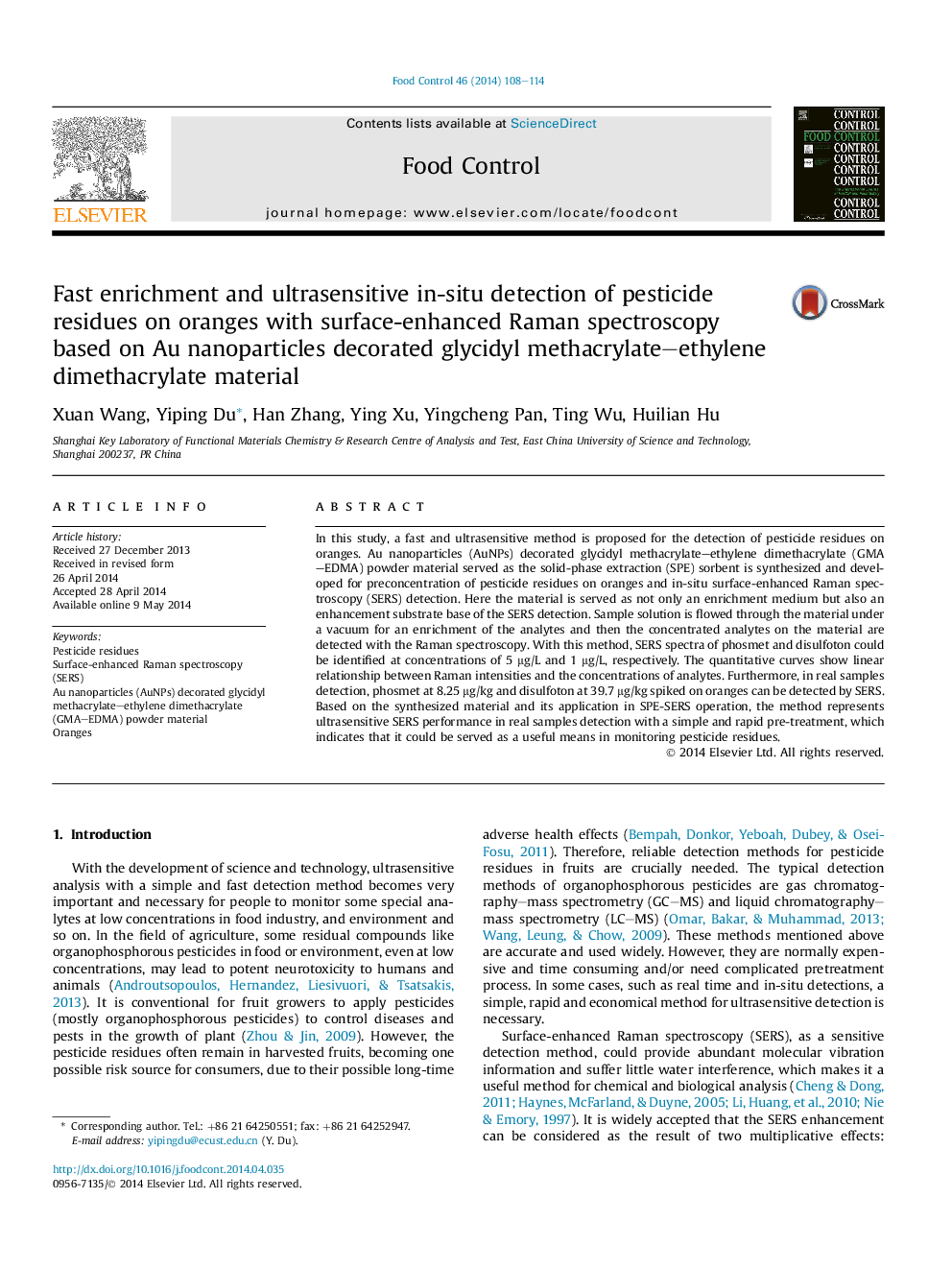| Article ID | Journal | Published Year | Pages | File Type |
|---|---|---|---|---|
| 6391181 | Food Control | 2014 | 7 Pages |
â¢A fast and sensitive SERS method is developed to detect pesticide residues.â¢AuNPs decorated GMA-EDMA material is synthesized as a novel SERS substrate.â¢The substrate could enrich analytes for in-situ SERS detection.â¢The method will be served as a useful means in monitoring pesticide residues.
In this study, a fast and ultrasensitive method is proposed for the detection of pesticide residues on oranges. Au nanoparticles (AuNPs) decorated glycidyl methacrylate-ethylene dimethacrylate (GMA-EDMA) powder material served as the solid-phase extraction (SPE) sorbent is synthesized and developed for preconcentration of pesticide residues on oranges and in-situ surface-enhanced Raman spectroscopy (SERS) detection. Here the material is served as not only an enrichment medium but also an enhancement substrate base of the SERS detection. Sample solution is flowed through the material under a vacuum for an enrichment of the analytes and then the concentrated analytes on the material are detected with the Raman spectroscopy. With this method, SERS spectra of phosmet and disulfoton could be identified at concentrations of 5 μg/L and 1 μg/L, respectively. The quantitative curves show linear relationship between Raman intensities and the concentrations of analytes. Furthermore, in real samples detection, phosmet at 8.25 μg/kg and disulfoton at 39.7 μg/kg spiked on oranges can be detected by SERS. Based on the synthesized material and its application in SPE-SERS operation, the method represents ultrasensitive SERS performance in real samples detection with a simple and rapid pre-treatment, which indicates that it could be served as a useful means in monitoring pesticide residues.
